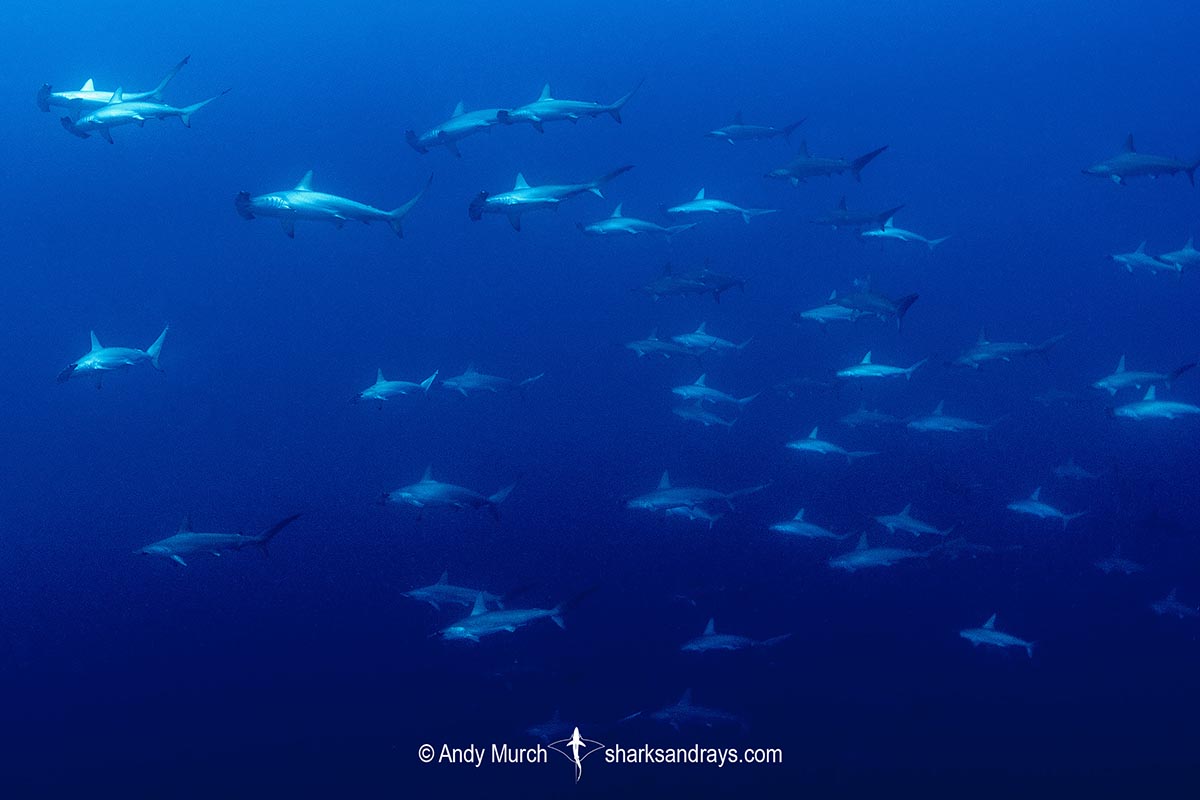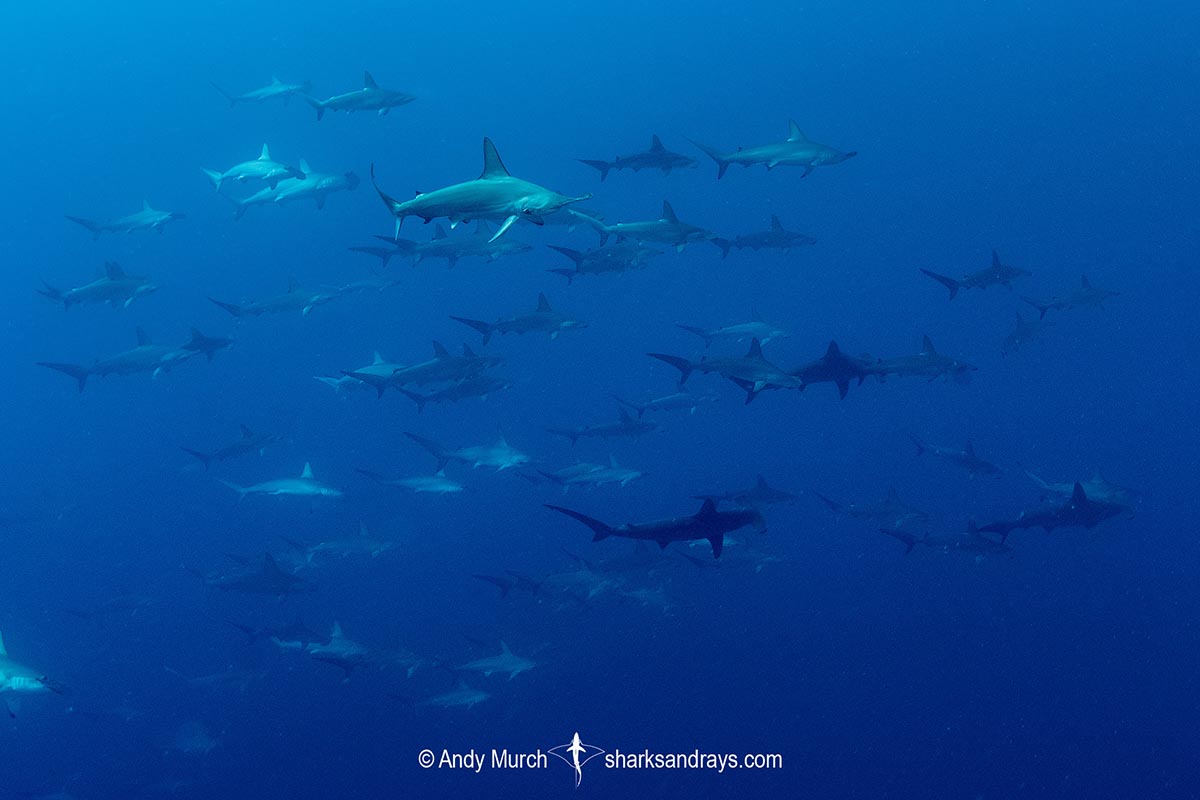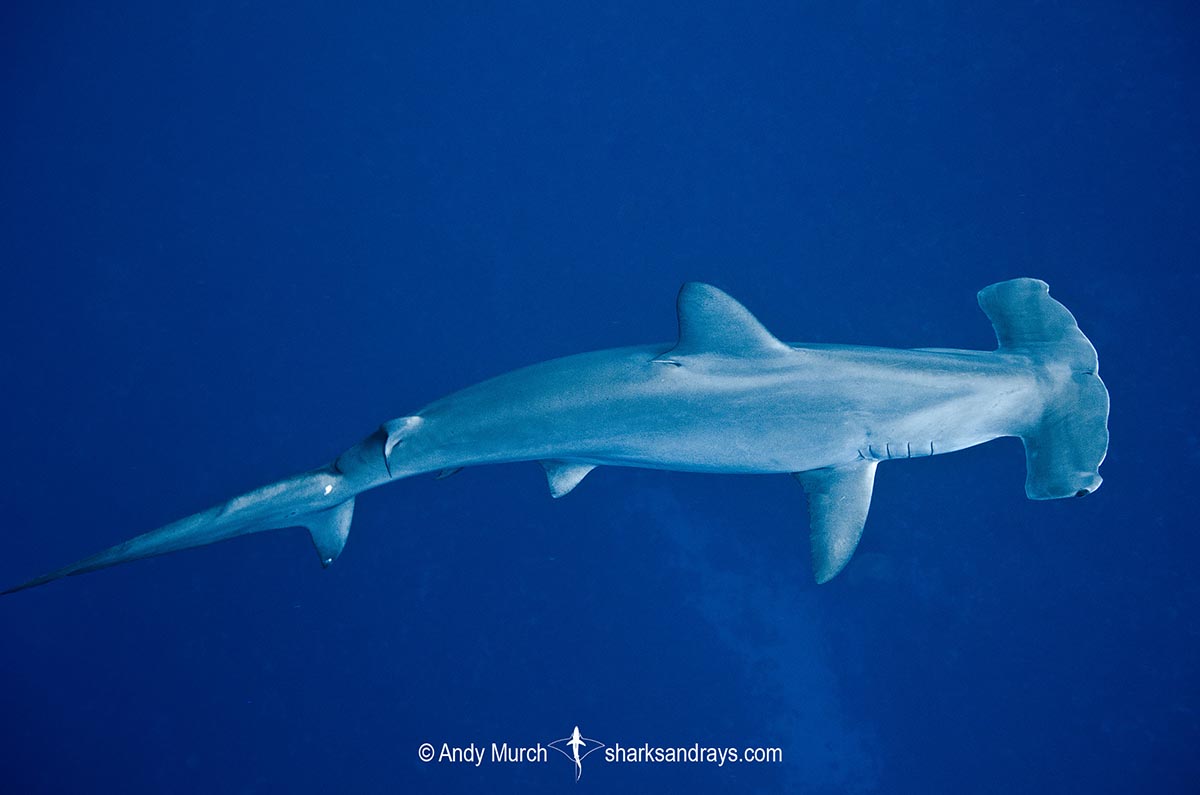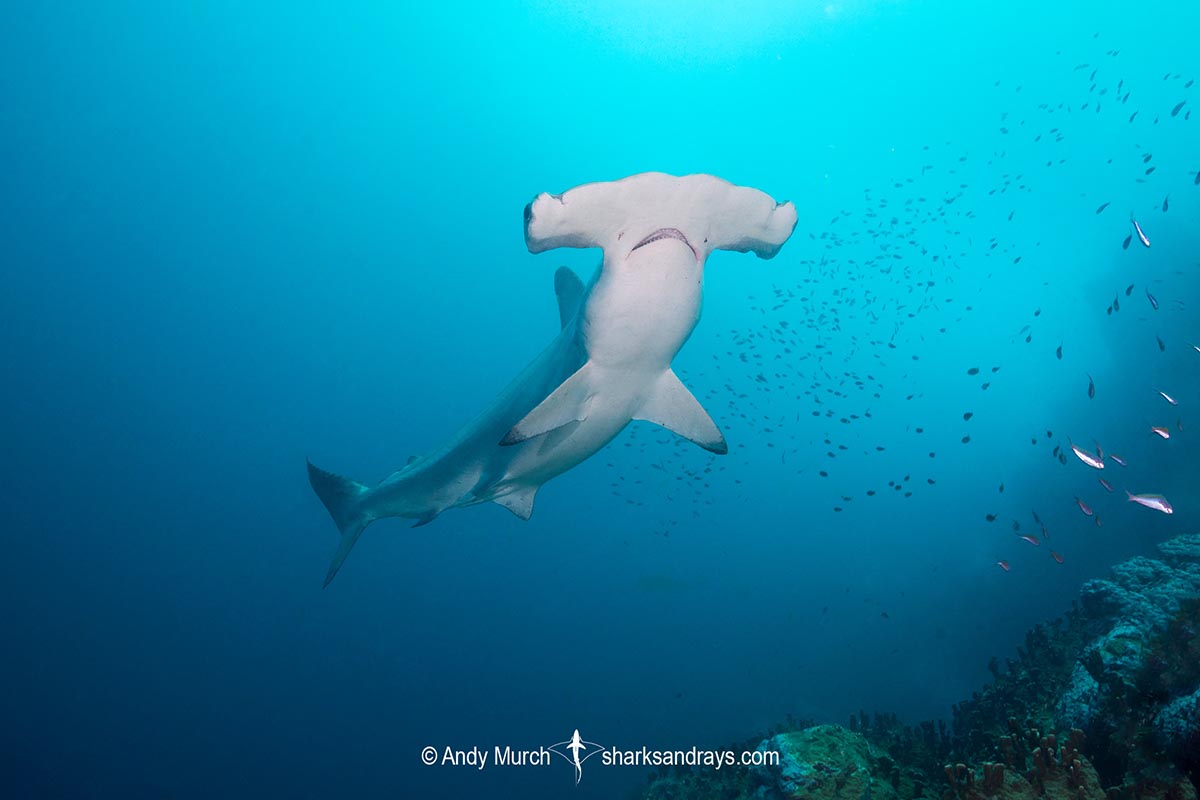Common names
Scalloped Hammerhead
Binomial
Sphyrna lewini
Synonyms
Cestracion leeuwenii, Cestracion oceanica, Sphyrna diplana, Sphyrna leweni, Zygaena erythraea, Zygaena, Zygaena lewini.
Identification
Leading edge of hammer curved with well defined central and lateral indentations (scalloping). First dorsal rear margin almost straight. Free rear tip does not reach origin of pectoral fins. Second dorsal fin small and low. Free rear tip long; extending almost to pre-caudal pit. Pelvic fin posterior margins not noticeably falcate. Ventral surfaces of pectoral fins have dusky tips; darker in adults. Body greyish-brown to olive-brown above. Ventral surface pale.
Size
Maximum length approximately 350cm. Reports of a 420cm specimen are possible but unconfirmed. 42-55cm at birth.

Conservation Status
CRITICALLY ENDANGERED
The scalloped hammerhead is fished globally as a target and bycatch species in pelagic commercial and small-scale longline, purse seine, and gillnet fisheries. It is retained for the meat and fins. When released, post-release survivorship is thought to be very low.
After decades of intense fishing for the sharkfin trade, the Scalloped Hammerhead has undergone dramatic declines globally, but there are signs of stabilization and possible recovery in response to management only in the Northwest Atlantic and Sea of Cortez. Globally, the population is thought to have been reduced by 76.9–97.3%, in the last 70+ years.

Habitat
Inshore to offshore sea mounts. Adults are more pelagic. Intertidal to 275 meters.
Distribution
Circumtropical/temperate in coastal and oceanic waters.
Reproduction
A viviparous species with yolk-sac placenta. Litter size up to 44 but usually between 10-22.
Diet
Diet consists mainly of stingrays, small sharks, a variety of bony fishes and crustaceans.
Behavior
Although Scalloped hammerheads are encountered individually, they have been well documented swimming in huge schools around sea mounts and offshore drop offs where they approach cleaning stations to rid themselves of parasites.
Why they swim in polarized schools is unclear as it is an unusual behavior among sharks. However, divers have witnessed scalloped hammerheads in coitus (two individuals coupling and crashing into the reef before separating) so their schooling behavior may be primarily related to reproduction.
Reaction to divers
Shy and easily spooked by loud noises such as diver’s bubbles. Very difficult to approach when viewed in schooling behaviour. Divers often have better success when using rebreathers.
Discretely positioning yourself next a cleaning station and trying to breathe slowly generally yields the best results.
Can be aggressive making close passes in baited situations.
Rarely seen by snorkelers.
Diving logistics
Schooling scalloped hammerheads can be encountered at numerous popular dive sites around the world. Generally speaking, the encounters are seasonal but stragglers may stay year round, some locations may be good all year. Temperature seems to play an important role i.e. if it is too warm, the hammerheads descend to deeper cooler water and visa versa.
Seamounts and offshore islands in the eastern tropical and temperate Pacific Ocean are particularly good. The northern Galapagos Islands (wolf and Darwin), Malpelo Island off of Panama, Cocos Island in Costa Rica, and the Revillagigedo Archipelago (aka Socorro) south of Baja are all well known hot spots.
All of the above mentioned spots are only accessible by liveaboard.
In the Sea of Cortez, Gorda Bank near Cabo, and El Bajo near La Paz were once very good spots but over-fishing has significantly reduced the shark populations those areas.
In the Central Pacific, Nuku Hiva in the Marquesas Archipelago delivers reliable close encounters.
In the Western Pacific, Japan has some seasonally excellent schooling hammerhead sites such as, Yonaguni Island at the western tip of the Ryukyu Archipelago, and Mikomoto Island on the Izu Peninsula.
Hammerheads are also encountered on deep drop offs near Malapascua Island in the Philippines.
In Florida in the Western Atlantic, shark-feeding operators sometimes inadvertently attract scalloped hammerheads. Although the encounters are unpredictable, this may be the best way to enjoy extremely close encounters.
Note: El Nino years may see less hammerheads as the water becomes too warm at recreational scuba depths and the sharks stay deeper. Following El Nino years may see the best schooling activity as the sharks are then in dire need of the cleaning stations that they were unable to reach the previous year.
Similar species
Great hammerhead distinguished by straighter leading edge of hammer, proportionately taller dorsal fin, and often larger size.
Smooth hammerhead distinguished by a leading edge of hammer which has no central indentation.
Carolina hammerhead Indistinguishable in the field. Examination of dead specimens will reveal approximately 10 fewer vertebrae than a scalloped hammerhead. Range restricted to the western Atlantic.










